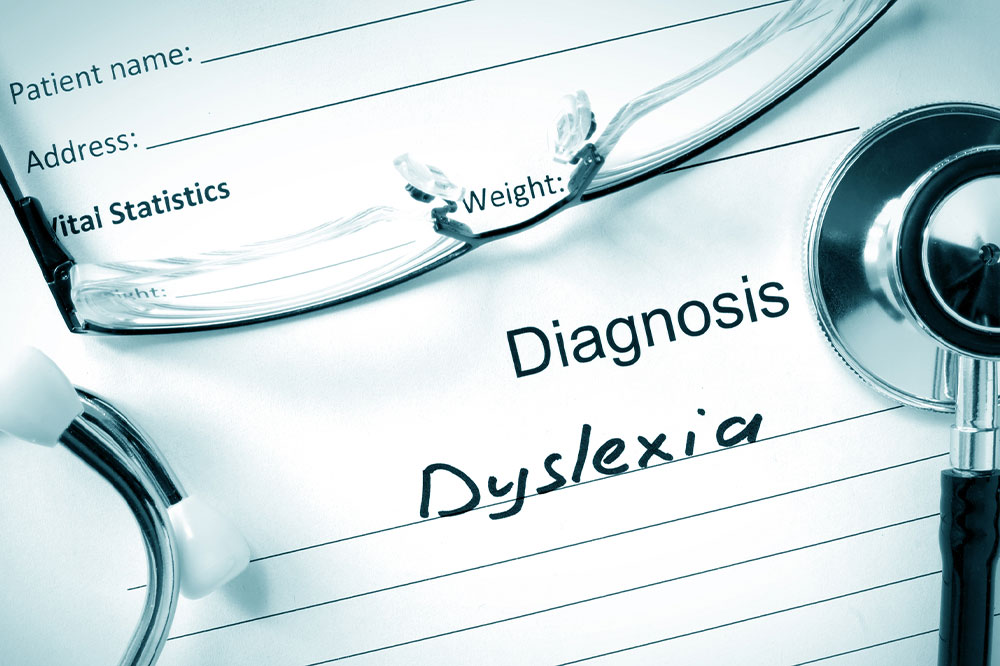Causes, Signs, and Diagnosis of Dyslexia
Dyslexia is a learning and reading disorder that makes it difficult for a person to decode words accurately and fluently. It can cause problems with reading comprehension, spelling, and writing. People with dyslexia may also struggle with math, organization, and time management. Levels of severity can vary, and it is often diagnosed in childhood; however, it can also affect adults. Understanding the causes and symptoms may help manage the condition better.
Causes
There are many possible causes of dyslexia, but the most likely cause is a combination of genetic and environmental factors. The condition can run in families and so there may be a genetic component.

While the exact cause is unknown, several theories exist about what might contribute to the development of this learning disorder. One theory suggests that it is caused by a deficiency in the brain’s ability to process phonemes (the smallest units of sound).
Whatever the cause, it is important to remember that this is a neurological disorder and not a result of laziness or poor intelligence. With proper diagnosis and treatment, people with childhood dyslexia can learn to read and write capably.
Signs and symptoms
Dyslexia is characterized by difficulty with phonemic awareness, word decoding, and word recognition. Dyslexia symptoms can include-
Difficulty with phonemic awareness is one of the most common indicators and means that individuals have trouble hearing and manipulating the sounds in words. They may also have difficulty segmenting words into individual sounds, or blending sounds to form words.
One early sign of dyslexia is reversals. This is when a child mixes up the letters ‘b’ and ‘d’ or says ‘w’ instead of ‘m’. Reversals can also happen when reading numbers – for example, a child may read ‘6’ as ‘9’.
Word decoding difficulties are another common symptom of dyslexia. Individuals may have trouble sounding out unfamiliar words, or may read words inaccurately. They may also struggle with sight words, or words that can’t be sounded out using phonics rules.
Another symptom is difficulty with word recognition. Individuals may have trouble recognizing familiar words, or may read words slowly and hesitantly. They could also mix up the order of letters when reading, or reverse letters when writing.
Other signs Of dyslexia include:
– Difficulty learning the alphabet or how to spell simple words
– Slow or delayed speech development
– Trouble rhyming words
– Mixing up multi-syllable words (e.g. saying ‘carpet’ instead of ‘carrot’)
– Struggling to break words down into smaller sounds (decoding)
– Taking a long time to learn new skills or complete tasks that others find easy
– Frequently losing place when reading or difficulty following along when others are reading aloud
– Difficulty with reading aloud
– Slow or choppy reading rate
– Difficulty with written expression
– Trouble organizing thoughts on paper
Dyslexia can vary in severity, and some people with a mild disorder may not even be aware that they have it. However, for others, it can be a major obstacle that interferes with school, work, and other aspects of life.
Diagnosis
A diagnosis for dyslexia is not always easy to come by. Some children are never diagnosed, while others are diagnosed early on in their schooling.
One reason why a diagnosis may be hard to get is that the symptoms can vary greatly from person to person. Some people have only mild symptoms, while others have more severe symptoms. This can make it difficult for doctors and educators to identify dyslexia in a child.
Another reason why it is difficult to make a diagnosis is that there is no one-size-fits-all test. Instead, doctors and educators must look at a range of factors, including a child’s family history, their performance on tests of reading and spelling, and their behavior in school. These variables can make it difficult to reach a definitive diagnosis.
There is no single treatment for dyslexia, as each individual with the condition will have different needs. However, there are some general approaches that can help people – even adults and teens with dyslexia to improve their reading and writing skills.
One common approach is to use a multisensory approach to teaching, which incorporates visual, auditory, and kinesthetic (touch-based) elements. This can help dyslexic children to better process information and retain what they have learned.
Individualized tutoring is another approach that can be effective for people with dyslexia. A tutor can help an individual to identify their strengths and weaknesses and work on specific areas that need improvement.
Technology can also help greatly. Several apps and software programs are designed specifically to help with reading and writing skills. Some of these programs can provide visual support or read text aloud, making it easier for dyslexic individuals to process information.
If your child struggles in school and you think they may have dyslexia, it is important to speak to your doctor or child’s educator. They can carry out further assessments and provide you with more information about the condition. Getting them assessed by a qualified professional is important. A diagnosis of dyslexia can be life-changing, and many resources and supports are available to help children and adults with this condition. Once a diagnosis is made, an individualized approach can be used to develop a progress plan.

